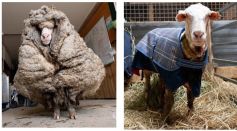ENVIRONMENT & CLIMATE
Edited Image or Real? Black-Browed Babbler Discovered Indonesia for the First Time in 170 Years
Neanderthals Could Hear? May Have Understood, Recognized Human Speech Like Modern-Day Man
Brown Marmorated Stink Bugs Arrive in Britain, Here's How to Get Rid of These Invasive Insects
Oldest Known Pet Cemetery in Ancient Egyptian Port With 2,000-Year-Old Remains of Cats, Dogs

Great Oxygenation Event: What Was It And How Did It Affect Life?
How Climate Change Helped Dinosaurs Migrate from South America to Greenland
Huge Solar Flare Captured Erupting from Sun's Surface in New NASA Video
Prehistoric Alligator-Like Fish Washed Up Ashore in Singapore 10,000 Miles Away From Its Native Home

Baarack the Sheep Finally Gets Much-Needed Hairdo; Shears Off 78 Lbs of Weight!

Koala Bears Battle With Cancer and STD Due to Genome-Altering Virus

Ornate Roman Chariot Near Pompeii Found: Ancient Equivalent of Lamborghini Still "Almost Intact"
LOOK: Alligator Popsicles in Oklahoma As Reptiles Stick Snouts Out of the Frozen Water
Roopkund Skeleton Lake: Scientists Continue Research on Origin of Hundreds of Human Bones in the Himalayas

Striped Pattern Over Russian Arctic Baffles NASA, What Is This Weird Topographical Feature?
Most Popular

Extreme Weather Science Reveals How Climate Change Patterns and Global Warming Transform Earth's Weather

What Causes Tornadoes and How They Form: Tornado Science Explained for Extreme Storms

Why Pandemics Keep Happening: Pandemic Cycle and the Rise of Emerging Diseases

How Planets Form: Planet Formation and Protoplanetary Disks in Solar System Creation





